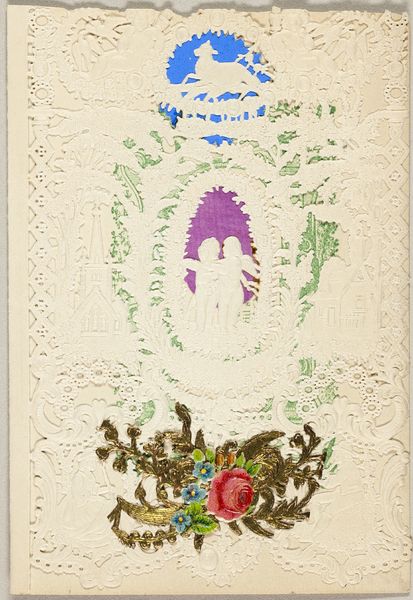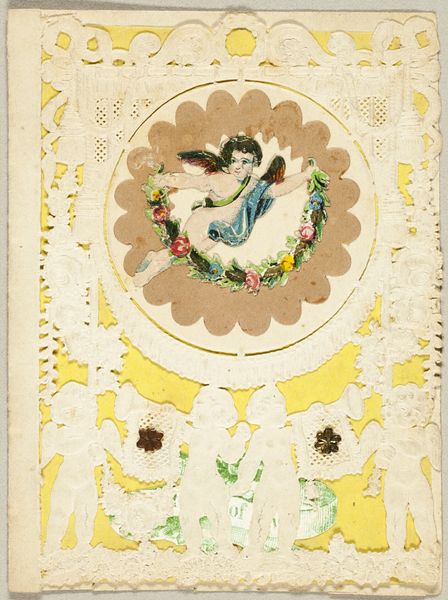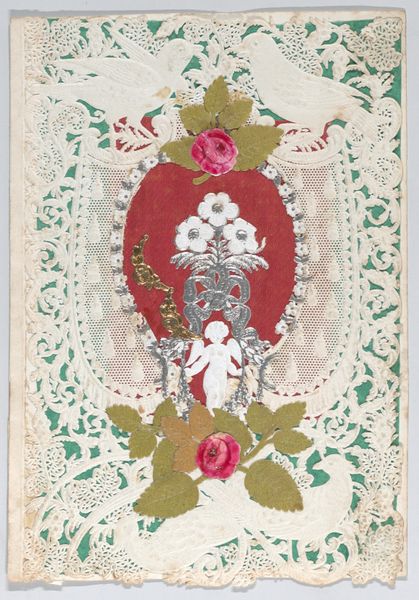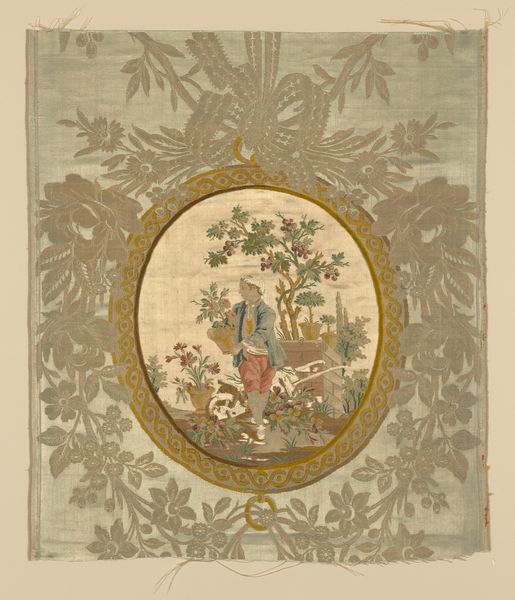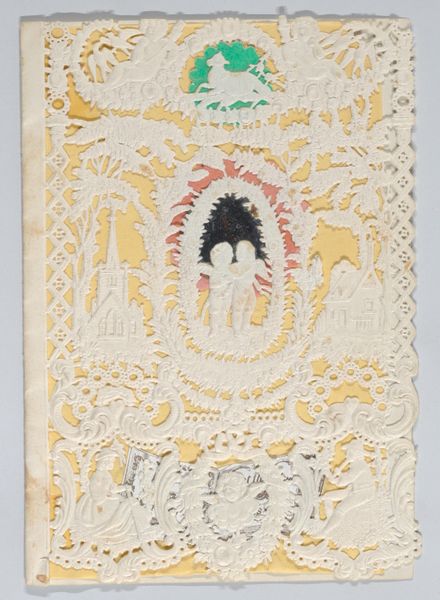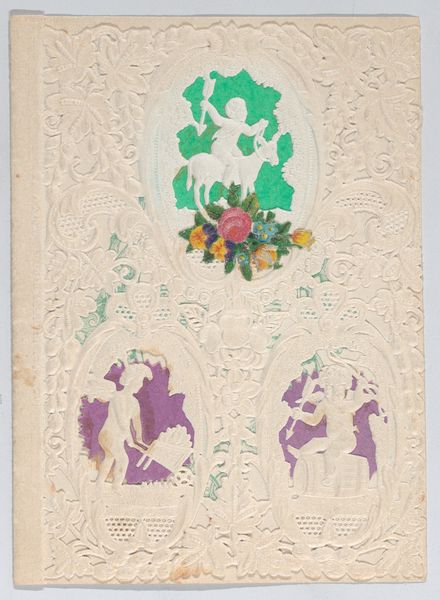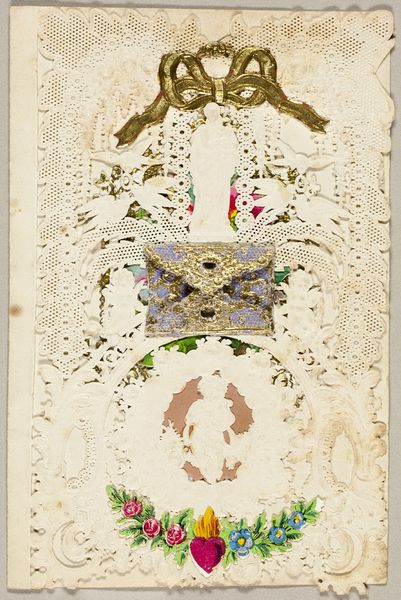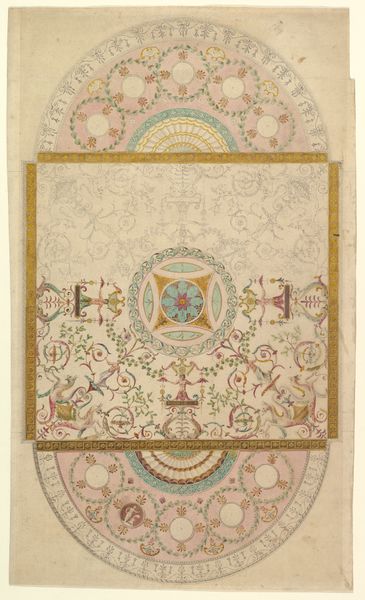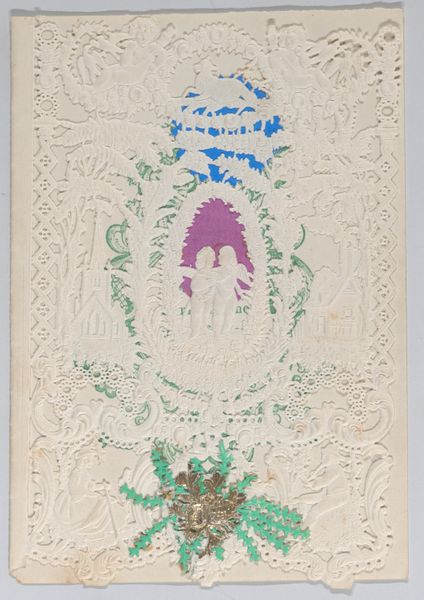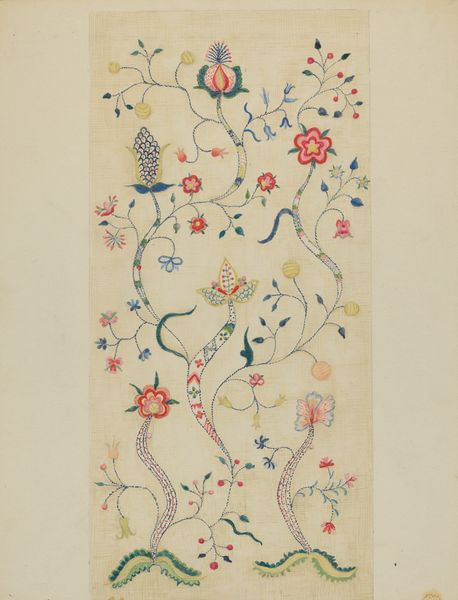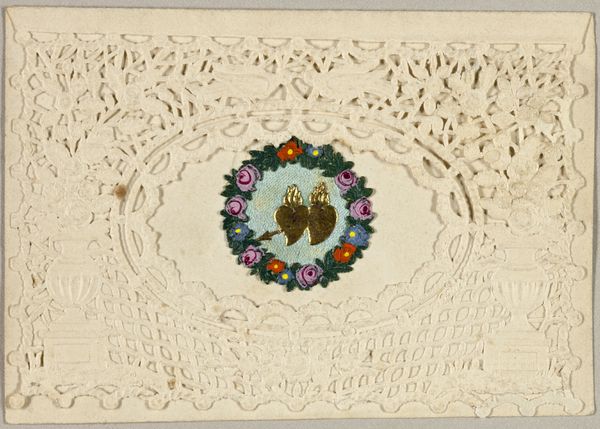
Dimensions: 120 × 84 mm (folded sheet)
Copyright: Public Domain
Esther Howland made this Valentine, Two Putti in a Wreath, from paper, lace, and fabric sometime in the 19th century. The design incorporates various materials and motifs associated with love and affection, such as delicate lace cutouts, images of embracing putti, and heart-shaped wreaths, very much in keeping with the fashion of the era. Howland was an entrepreneur who industrialized the production of Valentine's cards in the United States. This card, with its intricate details and carefully assembled layers, reflects the Victorian era's emphasis on sentimentality, courtship rituals, and the commercialization of holidays. Howland cleverly combined artisanal techniques with mass production, creating a market for elaborate and decorative valentines. The card’s imagery reinforces prevailing social norms and gender roles related to romance and relationships during that period. By exploring archives of trade publications, business records, and social histories, we can gain a deeper understanding of the cultural significance of these valentines and their role in shaping social interactions.
Comments
No comments
Be the first to comment and join the conversation on the ultimate creative platform.
